The artistry and passion of Isabeleños at Bambanti
Isabela was always elusive even if we often heard about it from Isabeleño Liza Andres Gernale, our administrative officer whose industriousness, thriftiness, creativity, entrepreneurial spirit and resilience are qualities that serve our company well and turn out to be the same virtues that make this province great.
Isabela’s Bambanti Festival was just as elusive, even if Nilo Agustin, formerly of the Department of Tourism, and Monino Duque, director and lighting designer (both consultants for the festival) would always be effusive about it as they encouraged us to visit. When they informed us this year that the government of Isabela was inviting us to be judges for the competition among Agricultural and Ecotourism Booths and the giant bambanti or scarecrows of the different cities and towns, we of course could not miss the opportunity.

What we saw and experienced, upon arriving in Isabela, however, was much more than what we expected or imagined. The friendliness and hospitality of the Isabeleños is evident the moment you land in the Cauayan City airport and at the Ilagan City capitol where the festivities take place. At the Bambanti Village, we were simply overwhelmed by the creativity and imagination of the different communities that pooled their talents and resources together to showcase the best of what the province has to offer in terms of agricultural, food and craft products; natural and manmade attractions; history, art and culture.
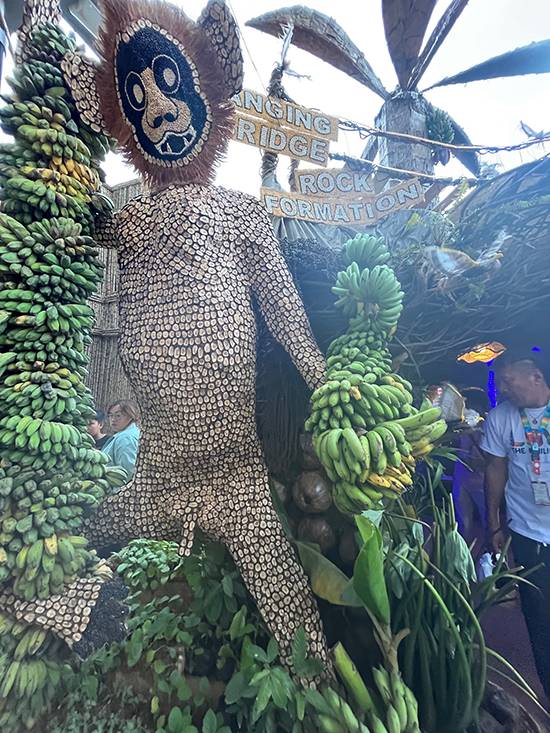
San Pablo, located in the northernmost tip, was founded in 1646, making it the oldest town in Isabela. Their booth was dominated by an installation highlighting the municipality’s farming animals and agricultural produce done in sawali and bamboo—a sculptural monument to all the resources they are thankful for. Gratitude, after all, is the reason this festival is held in the first place, and you felt it every time you talked to the representatives of each municipality. There is also a passion you glean as they proudly show off their products and tourist attractions like the Baka Festival, which we got a taste of as they proffered plates of beef roasted on-site.
Aurora, the province’s great calamansi producer (thanks to the suitable soil that stretches along the Magat River), used twigs of their signature citrus plant to create a spare but intriguing bambanti. The refreshing calamansi and turmeric drink was no doubt the favorite beverage of everyone for the festival.
San Guillermo, on the other hand, has vast banana plantations on its hillsides and terrains that epitomize the town itself and serve as the centerpiece of their Kasabbaan Festival. A monkey scarecrow is encrusted with banana chips and is surrounded by fresh green bananas which they turn into every imaginable product.
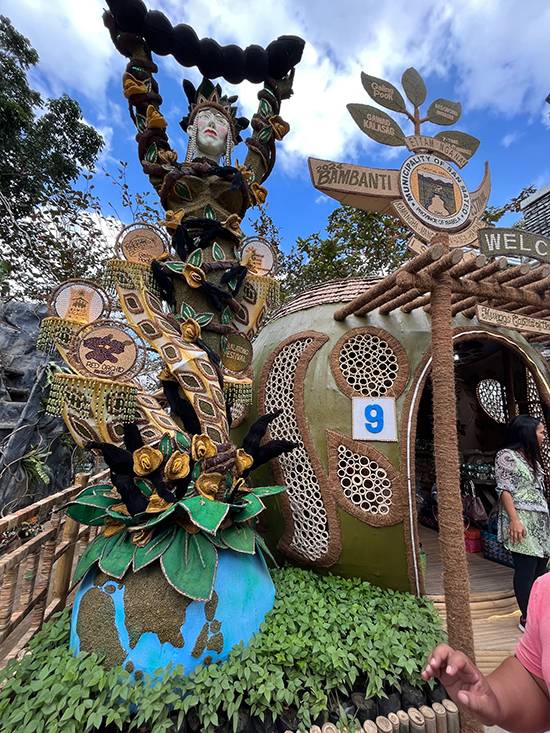
Just as enterprising is the landlocked municipality of San Mateo with the many iterations of mungo which they call “black gold” since it is their main product—from chips to panic and a creamy ice cream and pastillas. Their bambanti, fittingly, had the scarecrow raising a mungo pod to the heavens in thanksgiving.
With their shoreline barangays blessed with bountiful fish and marine life, Divilacan chose to employ meticulously crafted shell mosaics for a stunning scarecrow and tortoise rooftop finial. The municipality’s artistry extends to the culinary arts, which they demonstrated in a scrumptious lobster dish steeped in coconut milk and herbs.
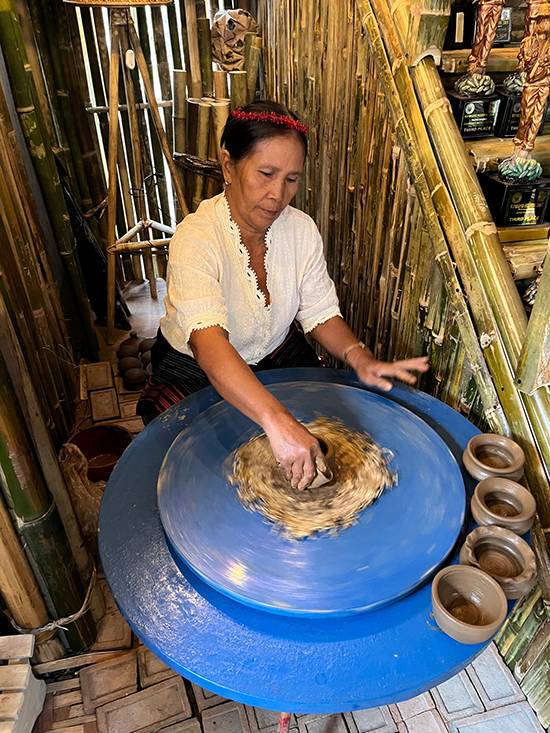
Just as aromatic is the pinilisa rice of Jones, which decided to highlight their rice and corn production through mosaics that embellished their mermaid bambanti, the booth walls and even portraits of prominent citizens.
For a province so blessed with abundant resources, it was amazing to see how they are thrifty and creative, as seen in various upcycling installations like Roxas’ carabao-riding scarecrow of scrap metal and Cauayan City’s “Malakas and Maganda” of excess copper wires. Cauayan also had the added attraction of Gaddang artisans actually working on pieces during the fair, like a potter and weaver whose fabrics were proudly worn by a couple who enthusiastically explained their traditions.
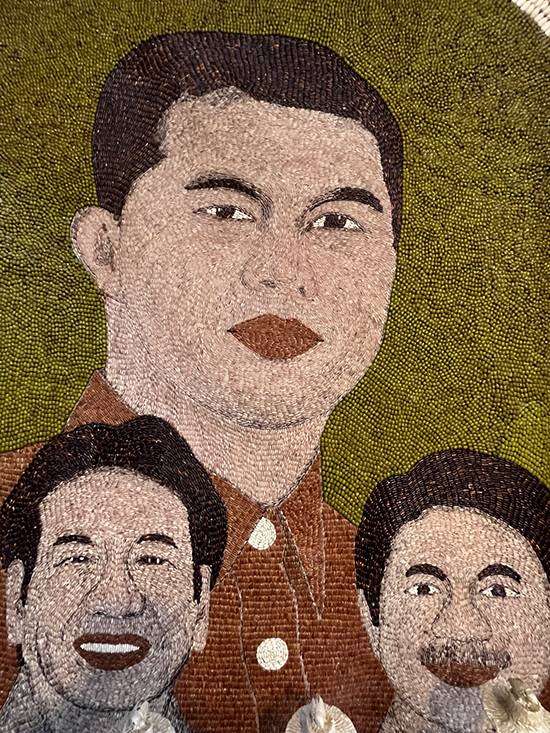
Other ethnolinguistic groups like the Paranan and Yogad add to the rich cultural tapestry of the province, which also prides itself on its Spanish colonial heritage of beautiful churches like Tumauini’s famous Baroque-style San Matias Parish Church made of red bricks, declared a National Cultural Treasure by the National Museum and included in the UNESCO World Heritage Tentative List. Tumauini’s bambanti, naturally, is Saint Matthias, the disciple who replaced Judas Iscariot after his betrayal of Jesus.
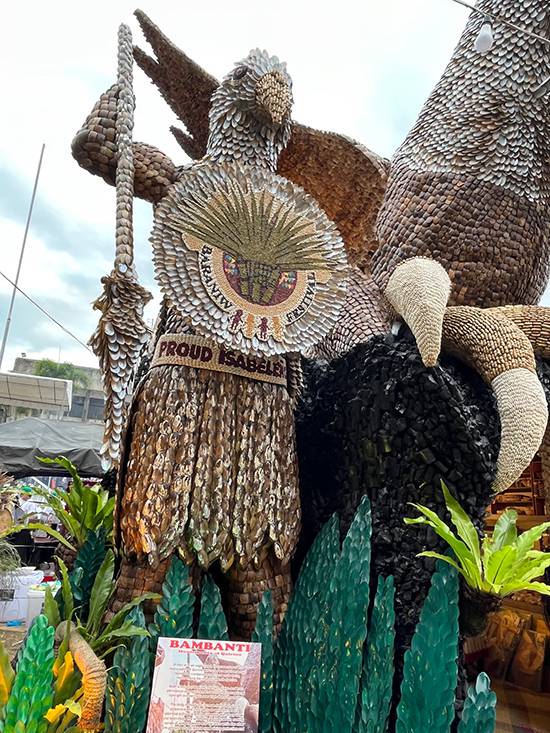
Perhaps what brought us even deeper into Isabela’s history—to pre-colonial times—was the booth of Echague, known for the endangered Indigenous Cultural Community of the Yogad whose language is spoken and conserved by locals. There was an otherworldly feeling in their booth, where candy glass ceiling panels cast blue and golden shafts of light on the floor as a mapponag or babaylan, as the Philippines’ shamans are known, was practicing a healing ritual with a miniature boat. She is credited for keeping the community safe from COVID by sending the negative vibrations away on the boat and she continues to constantly bring protection.
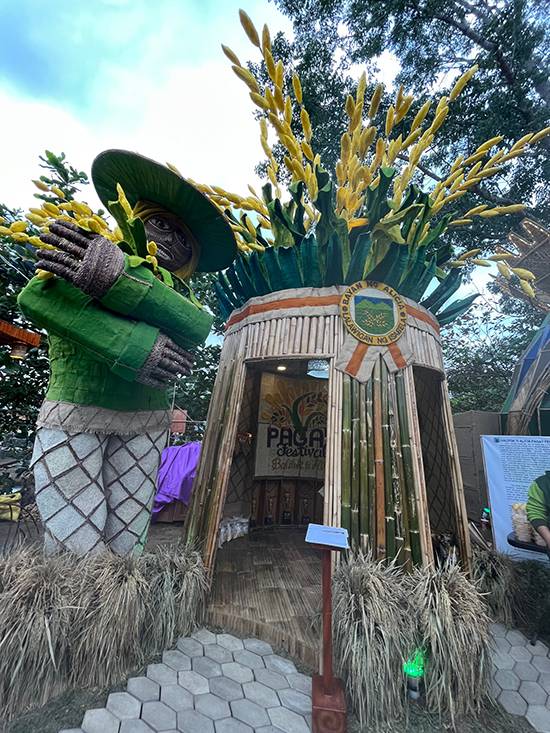
If the agri-eco booths displayed the Isabeleños talents in industry and the visual arts, the evening street dance competitions at the Isabela Sports Complex showcased their prowess in the performing arts, outdoing one another in choreography, costume design and artistry. After meeting their townmates at the booths, watching them perform completed the experience of what each municipality or city was all about. The whole presentation was quite overwhelming, from the dances with organized and seamless transitions to the final musical show ending in a fantastic fireworks display. It was a fitting end to our Bambanti Festival experience, leaving a lasting impression of how incredible Isabela is and how the passion and hard work of Isabeleños can produce such wonders when all the communities are in harmony with one another.


